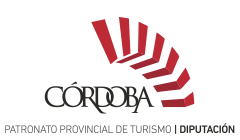Añora, a name derived from the Arab term noria, which means waterwheel, proudly displays age old granite. Añora, a name derived from the Arab term noria, which means waterwheel, proudly displays age old granite in its churches and on its building façades (ashlars with joins carefully marked out in white, referred to as “tiras” by the local people) and in the form of the half dozen granite crosses that stand in the streets of the village, which are lovingly decorated by the inhabitants in May, upon the coming of Spring.
- The village is located in the central area of Los Pedroches, close to the C-420.
- Distance from Córdoba: 90 km.
- Altitude: 623 m.
- Surface area: 111.8 km2.
- Population: 1.534.
- Term used to designate inhabitants: Noriegos.
- Region: Los Pedroches.
It is believed that Añora arose at the end of the 14th century or beginning of the 15th century, based around a Moorish waterwheel [noria], from which it derives its name. Originally a dependency of the neighbouring village of Torremilano, Añora was granted independence in 1492 via a charter issued by the Catholic Monarchs. In 1553 the municipality acquired the status of village and became one of the Siete Villas de los Pedroches [the seven villages of los Pedroches].






